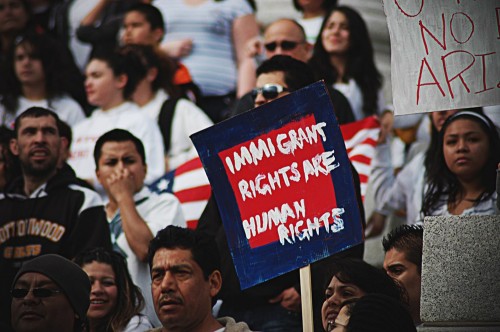Why is color consciousness important for transracial adoptees?

American family units are as diverse as ever. As the world becomes more understanding of different lifestyles, the definition of “family” continues to evolve.
One such evolution is adoptive families and their many different shapes and colors. Adoption is a mode of becoming parents used by many different kinds of people, including those who are unable to conceive, gay couples, and single people. In 2018, the Administration for Children and Families reported that an estimated 125,300 children were waiting to be adopted in the US.
While adoption is relatively easy to understand, adoption’s inherent effects on the adoptee are much more complex, especially for their adopted families. Within the umbrella term of “adoption,” several different subcategories exist to describe the relationship between the adoptee and their adoptive parent(s). One of the most common subcategories is “transracial adoption,” which refers to the placing of a child with an adoptive family of a different race or ethnicity. From 2017 to 2019, about one-third of all United States adoptions were transracial.
Color Blindness and the Romanticization of Adoption
In modern society, transracial adoption is often rooted in the white savior complex. White parents of foreign adoptees of color sometimes act as “saviors” of impoverished children from third-world countries who gave them the gift of life in the modern world. Author and adoptee Melissa Guida-Richards writes in her novel What White Parents Should Know About Transracial Adoption: An Adoptee’s Perspective on its History, Nuances, and Practices that 84 percent of transracial adoptive parents are white.
Many people neglect to consider the quality of life of a child growing up in a community that does not reflect them ethnically. Many white adoptive parents choose to raise their children of color as color blind, meaning they are taught not to allow one’s race to impact how they move through life. Colorblindness is often confused with the practice of “treating everyone equally.” However, color is important in some situations, such as transracial adoption.
Negative Effects
White adoptive families often create an unhealthy environment where differences are not seen, understood, or celebrated. Despite their good intentions, neglecting to understand and acknowledge the differences between life as a white person and life as a person of color is dangerous to adoptees. The North American Council on Adopted Children cites identity as one of the seven lifelong core issues for adoptees. Not providing adoptees with a safe space to explore their race and identity hinders their ability to work through those issues.
Many white adoptive families refuse to discuss race due to awkwardness or unwillingness to see the damage that white people have done. However, families’ choices not to see color in no way erases the existence of racism and historically racist systems still prevalent in America. These systems will inevitably affect a child of color regardless of their parent’s beliefs.
Even before they can understand the complexities of race, young children can understand that there are different races. They can point out differences in skin color, hair color, and accents. How can we ask children of color to interpret racial differences and be prepared to confront the obstacles they will inevitably encounter as adults if raised in colorblind families?
What is color consciousness, and why is it essential to adoptees?
The practice of color consciousness is the opposite of colorblindness in that people acknowledge and talk about the differences in quality of life for different ethnicities in a healthy manner. Regarding race, there are usually two extremes: “everyone is equal, so we should all be treated equally” and “we are not equal, and some races are superior to others.”
Color consciousness acknowledges that all humans deserve kindness and that historical systems largely benefit white people. While there are now laws protecting people of color against admittedly racist practices, the damage from centuries of discrimination remains.
Color consciousness teaches children how to navigate the complicated world of race relations. It also teaches parents (specifically white parents) how to be more empathetic towards members of communities that they are not a part of but love and value.



